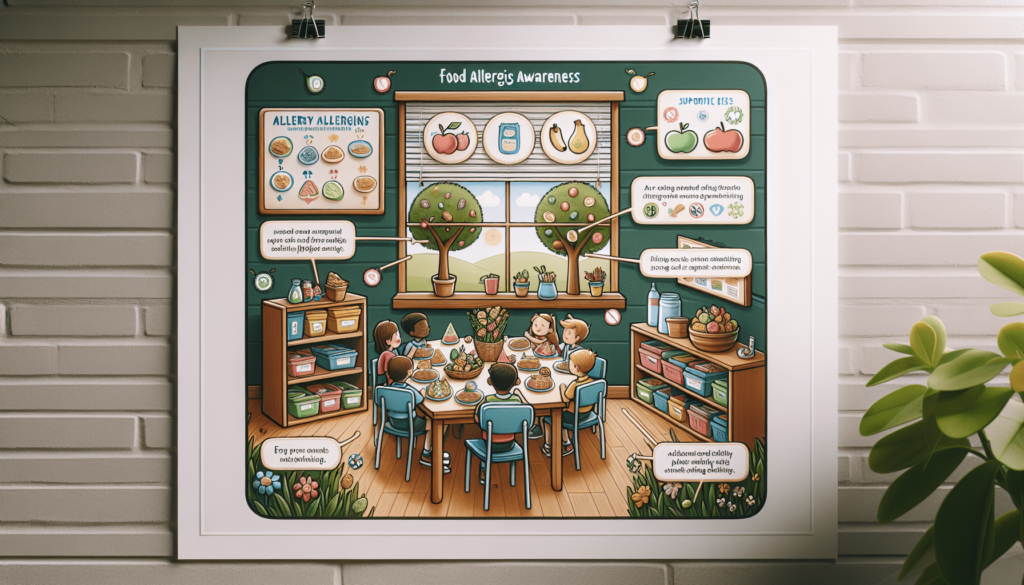So, you’re determined to make schools safer for students with food allergies, and that’s incredibly important work! “How to Advocate for Food Allergy Safe Schools” is your go-to guide for creating a learning environment where every child feels secure. You’ll discover practical steps for raising awareness, collaborating with school staff, and implementing effective policies that protect students with food allergies. Let’s dive into how you can lead the charge in making schools a safer place for everyone! Have you ever wondered how you can ensure that your child or students with food allergies are safe at school? Schools can be daunting places for parents of children with food allergies, but with the right advocacy and preparation, you can create a safer environment. Let’s walk through everything you need to know about advocating for food allergy-safe schools.

Understanding Food Allergies
What Are Food Allergies?
Food allergies are an immune system response to a food that the body mistakenly believes is harmful. Your body’s reaction can range from mild (rashes, itching) to severe (anaphylaxis). These reactions can be life-threatening and thus, understanding what food allergies are and how they can impact a student’s life is crucial.
Common Food Allergens
Let’s start by knowing the main culprits:
| Allergen | Examples of Foods |
|---|---|
| Peanuts | Peanut butter, some baked goods |
| Tree Nuts | Almonds, walnuts, pecans |
| Milk | Dairy products like cheese, milk |
| Egg | Baked goods, sauces, mayonnaise |
| Wheat | Bread, pasta, cereals |
| Soy | Soy sauce, tofu, processed foods |
| Fish | Salmon, tuna, cod |
| Shellfish | Shrimp, lobster, crab |
Your advocacy starts with knowing the facts and sharing them with the school to ensure everyone is educated.
Building a Foundation for Advocacy
Begin with Awareness
The first thing you need to do is raise awareness. It’s essential that everyone involved understands the importance and seriousness of food allergies. The knowledge you provide can be life-saving.
Communication is Key
Effective communication is your most powerful tool. It’s essential to create open lines of communication between parents, school staff, and students. Make sure that everyone knows about the specific allergies your child has, and the steps to take in case of an emergency.
Steps to Create a Food Allergy Safe School Environment
Step 1: Develop a School Allergy Policy
It’s crucial to collaborate with school administrators to develop a robust allergy policy that protects allergic students. The policy should include everything from prohibition of certain food items to protocols on dealing with allergic reactions.
Step 2: Staff Training
Insist on comprehensive training for all staff members. Schools should provide regular training sessions on:
- Recognizing symptoms of an allergic reaction.
- Administering epinephrine.
- The school’s specific emergency protocol.
Step 3: Individual Health Plans (IHPs)
Work with the school to create an Individual Health Plan (IHP) for your child. This document should detail specific allergen information, symptoms of exposure, and exact steps that should be taken in case of an allergic reaction.
Step 4: Establish a 504 Plan
A 504 Plan is a legally binding document that falls under the Rehabilitation Act. It ensures that a student with disabilities (including severe allergies) receives accommodations that will make their school environment more supportive. The plan might include provisions for classroom management, lunchroom guidelines, and emergency protocols.
Step 5: Safe Lunchroom Practices
Go over lunchroom practices with the school staff. Possible changes include:
- Creating allergen-free tables.
- Enforcing strict hygiene practices.
- Providing allergen-free options.
Step 6: Classroom Adjustments
Educate teachers and classmates about your child’s allergies. Some classroom adjustments could be:
- Banning allergen-containing foods.
- Implementing hand-washing routines before and after meals.
- Using non-food-based rewards and activities.
Engaging the Community
Building Support Networks
Creating a team of allies is vital. Connect with other parents of children with allergies, healthcare providers, and advocacy groups. Together, you can push for better policies and support both inside and outside the school.
Hosting Informative Sessions
Offer to host training sessions for parents, teachers, and students. These sessions can cover:
- The basics of food allergies.
- Emergency protocols.
- Ways to be supportive and inclusive.
Advocacy and Legislation
Join local and national allergy advocacy organizations. These groups can provide you with additional resources and support, as well as help you lobby for broader legislative changes to protect all children with food allergies.

Dealing with Resistance
Understanding the Concerns
Not everyone will immediately understand the necessity of strict food allergy policies. Be prepared to encounter some resistance, and use these opportunities to educate and inform.
Clear Communication
Be sure to keep all communications clear and to the point. Focus on the facts and the reasons behind every request. Always remain calm and patient when addressing concerns.
Offering Solutions
When you encounter pushback, offer practical solutions. For example, if a teacher balks at banning certain snacks, suggest alternatives that are safe for all students.
Long-Term Strategies and Maintenance
Regular Review of Policies
Food allergy policies should not be static. Insist on regular reviews and updates to policies and procedures to adapt to the changing needs of students.
Continuous Education
Education should be continuous. New staff members will need training, and existing staff should have refresher courses.
Monitoring and Feedback
Keep an open dialog with your child and the school to monitor the effectiveness of the policies in place. Gather feedback and be ready to make necessary adjustments.
Personalizing Your Approach
Tailoring to Your Child’s Needs
Every child and every allergy is different. Personalize your advocacy efforts to meet the specific needs of your child.
Document Everything
Keep detailed records of meetings, plans, and communications. This documentation can be invaluable in ensuring that all agreements and protocols are followed.
Staying Up-to-Date with Research
Research and Innovations
Stay informed about the latest research and innovations in allergy management. New treatments and solutions are constantly being developed that can further help ensure your child’s safety.
Online Communities
Participate in online forums and communities dedicated to allergy advocacy. These groups can be excellent sources of information and support.
Conclusion
Advocating for food allergy-safe schools requires dedication, persistence, and a proactive approach. By following these steps and maintaining open lines of communication, you can help build a safer and more inclusive environment for students with food allergies. Remember, your advocacy not only protects your child but also sets a precedent for others, creating a community of understanding and safety.
So, take that first step today. Your voice could very well make the difference between a safe school environment and one fraught with avoidable risks. You’ve got this!
